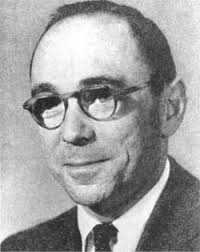|
Bowlby's Attachment Theory
This theory describes the types of attachments that we form at birth, and how the effect our development. He states that babies need attachment for survival. When they are first born they need someone to feed, bathe, an clothe them. Aspects such as crying, or smiling, show parents what their child need. This helps them survive by being able to communicate what they want. He believes that the most important attachment is to ones mother. He states that if students aren't able to make these attachments they can become aggressive, depressed, and even unable to express affection. https://www.youtube.com/watch?v=YfnzLon90C4 Vygotsky's Social Development Theory Lee Vygotsky believes that most people get their cognitive skills from social environments. By watching how adults act and their habits children discover what is right and wrong. They also learn these skills from interaction in the environment. He states that students learn social skills before cognitive skills, so it's important that a child develops so they don't have trouble later in life with their cognitive skills. Part of Vygotsky's theory is the zone of proximal development. This means that students can determine when they need help, and when they are able to work something out on their own. https://www.youtube.com/watch?v=-p_-0n2f35o David Kolb's learning theory Kola's theory can be described in 2 parts, the Experimental Learning Cycle and the four learning styles. The Experimental Learning cycle is the process where knowledge comes from reflection and analysis of experience. There are four stages; Concrete experience, Reflective observation, Abstract conceptualization, and active experimentation. He believe that students learn through repetition of these four stages. The second part of the theory is the four learning styles; Diverging, assimilating, converging, and accommodating. The important part about this portion of the theory is that learn differently, using a combination of these different styles. https://www.youtube.com/watch?v=ObQ2DheGOKA
0 Comments
 For this assignment I chose to research Jerome Bruner' and his stages of representation theory. Bruner's theory focuses more on student centered learning, meaning that they will have more participation in their own learning process. He explains that cognitive developments involves an interaction between basic human capabilities, that can be amplified by technology. There are three aspects to Bruners theory; Enactive, Iconic, and Symbolic representation. Enactive representation involves ending action based information and storing it in our brain to use later. The next level is known as Iconic representation where information is stored in images. This could be in the form of a chart of diagram, that accompany's a lecture, to help students better understand the material. The third and final is called Symbolic representation. This involves using symbols, such as language, to store information. That good thing about symbolic representation is that it can be manipulated, or classified so it's easier to memorize and store information. What is different about this theory than other theorists, such as Piagets, is that while these are technically in a series of stages, they can be applied to learners of any age. This theory is useful in a classroom because teachers can ask as a facilitator to student's learning by creating activities that allow students to explore on their own. This theory also allows a more open communication between students and teachers, so instead of just listening to a teacher lecture, they can get involved in their own learning. However, I think that this theory won't work for all students because some will need that direct instruction from a teacher, otherwise they'll end up confused. While Bruner's Stages of Representation has a few drawbacks, I believe it is effective when used in a classroom. Additional resources: www.brighthubeducation.com/teaching-methods-tips/76645-pros-and-cons-of-constructivist-learning-theory/ http://www.teach-nology.com/currenttrends/constructivism/bruner/ www.teach-nology.com/currenttrends/constructivism/bruner/
|
AuthorI will share reflective essays, and philosophical documents on this page. Archives
December 2018
Categories
|
 RSS Feed
RSS Feed
